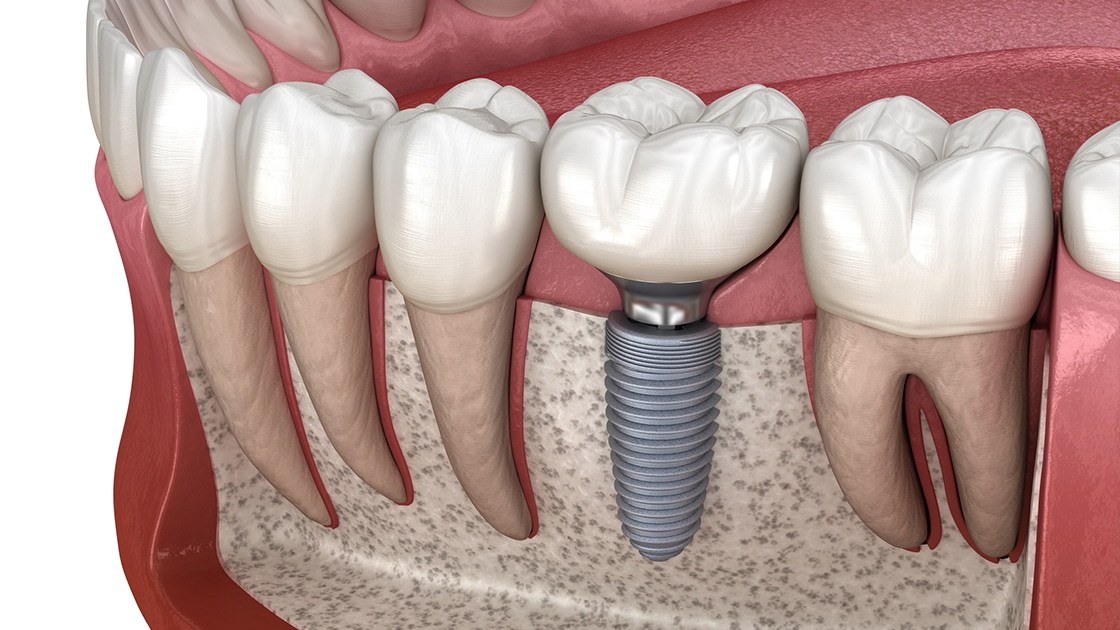Dental Sense for Beginners
Dental Sense for Beginners
Blog Article
What Does Dental Sense Do?
Table of ContentsDental Sense Fundamentals ExplainedDental Sense Things To Know Before You BuyThe Facts About Dental Sense UncoveredThe Only Guide to Dental Sense
are clinical devices surgically dental implanted right into the jaw to recover a person's capacity to eat or their appearance. They give assistance for fabricated (fake) teeth, such as crowns, bridges, or dentures. When a tooth is lost as a result of injury or disease, an individual can experience problems such as quick bone loss, malfunctioning speech, or changes to chewing patterns that result in discomfort.Dental implant systems include an oral implant body and oral implant abutment and might likewise consist of an abutment fixation screw. Dental implants. The dental implant body is operatively inserted in the jawbone in location of the tooth's root. The dental implant abutment is normally affixed to the implant body by the abutment addiction screw and expands through gum tissues into the mouth to sustain the affixed synthetic teeth
(https://triberr.com/dentalsense1)Framework of The Dental Implant System selecting dental implants, speak to your oral copyright regarding the possible advantages and risks, and whether you are a prospect for the treatment. Points to take into consideration: Your overall health and wellness is a crucial consider establishing whether you are a great prospect for dental implants, how long it will require to recover, and the length of time the dental implant may remain in place.
Smoking cigarettes may impact the healing procedure and reduce the lasting success of the dental implant. The recovery process for the dental implant body might take numerous months or longer, throughout which time you commonly have a short-lived joint instead of the tooth. the oral implant treatment: Meticulously adhere to the dental health guidelines provided to you by your oral company.
The Single Strategy To Use For Dental Sense
Implant failure can result in the need for an additional operation to fix or change the dental implant system. Restores the capability to chew Recovers cosmetic appearance Assists keep the jawbone from shrinking because of bone loss Protects the wellness of the bordering bone and gum tissues Helps maintain adjacent (close-by) teeth stable Boosts high quality of life Damages to surrounding natural teeth throughout implant placement Injury to the surrounding cells during surgical procedure, such as sinus perforation Injury throughout surgical procedure (as an example, fracture of bordering jawbone) Poor feature, such as seeming like the teeth do not bite together normally A sensation that the tooth is loose or twisting in place resulting from a joint screw loosening Implant body failing (looseness of the dental implant body) because of systemic infection, which may be most likely in individuals with uncontrolled diabetics issues as a result of neighborhood infection in bone and gum tissues supporting the dental implant body due to delayed healing, which may be more probable in patients that smoke Trouble cleaning up the periodontals around the dental implant, resulting in bad dental hygiene Neglected gum condition Post-surgical numbness due to nerve impingement or damages Always inform wellness treatment service providers and imaging professionals that you have oral implants prior to any type of magnetic vibration imaging (MRI) or x-ray procedures.
FDA is not aware of any negative events reported for MRI or x-ray procedures with oral implants. Oral implants systems are normally made of materials that adhere to worldwide consensus requirements of the International Organization for Standardization (ISO) or ASTM International. These criteria have information of what makes a secure product.

An oral implant is a framework that changes a missing out on tooth. With screw-like gadgets, the cosmetic surgeon inserts a dental implant right into the jawbone, and it acts as an anchor for a man-made tooth, called a crown. A gadget called a joint attaches the artificial tooth to the oral implant. The crown is customized to fit the person's mouth and match the shade of their teeth.
How Dental Sense can Save You Time, Stress, and Money.
Some people are not qualified for dental implant surgery. It is for dental surgeons to operate on individuals with: severe illnessuncontrollable metabolic diseasebone or soft cells illness or infectionIf these concerns are dealt with, a person can have the surgical procedure. In, oral specialists avoid operating individuals with: If individuals with any one of the above undertake oral implant surgery, there is a higher risk of the dental implant failing.

Oral implant surgical treatment is an individualized process. Give you time to recover. Affix the blog post and final crown, bridge or denture.
Next off, your cosmetic surgeon will meticulously position the oral implant into your jaw. If your dental implant is near the front of your mouth, your dentist will make a short-lived tooth for you to put on up until you recover.
All about Dental Sense
Your service provider can inform you what to expect in your situation. Throughout the healing phase, your jawbone needs to fuse to the dental implant. This procedure, called osseointegration, is crucial for stability and long-lasting success. This process can take anywhere from three to 9 months. Sometimes, it may take much longer.
Once your dental implant heals, your dental practitioner can attach the abutment (tiny connector article) and your last remediation (crown, bridge or denture). This usually takes about one hour to finish and might require a second minor surgical treatment. You shouldn't feel any type of pain throughout your oral implant procedure due to the fact that your copyright will use medication to numb your gum tissues.
Report this page